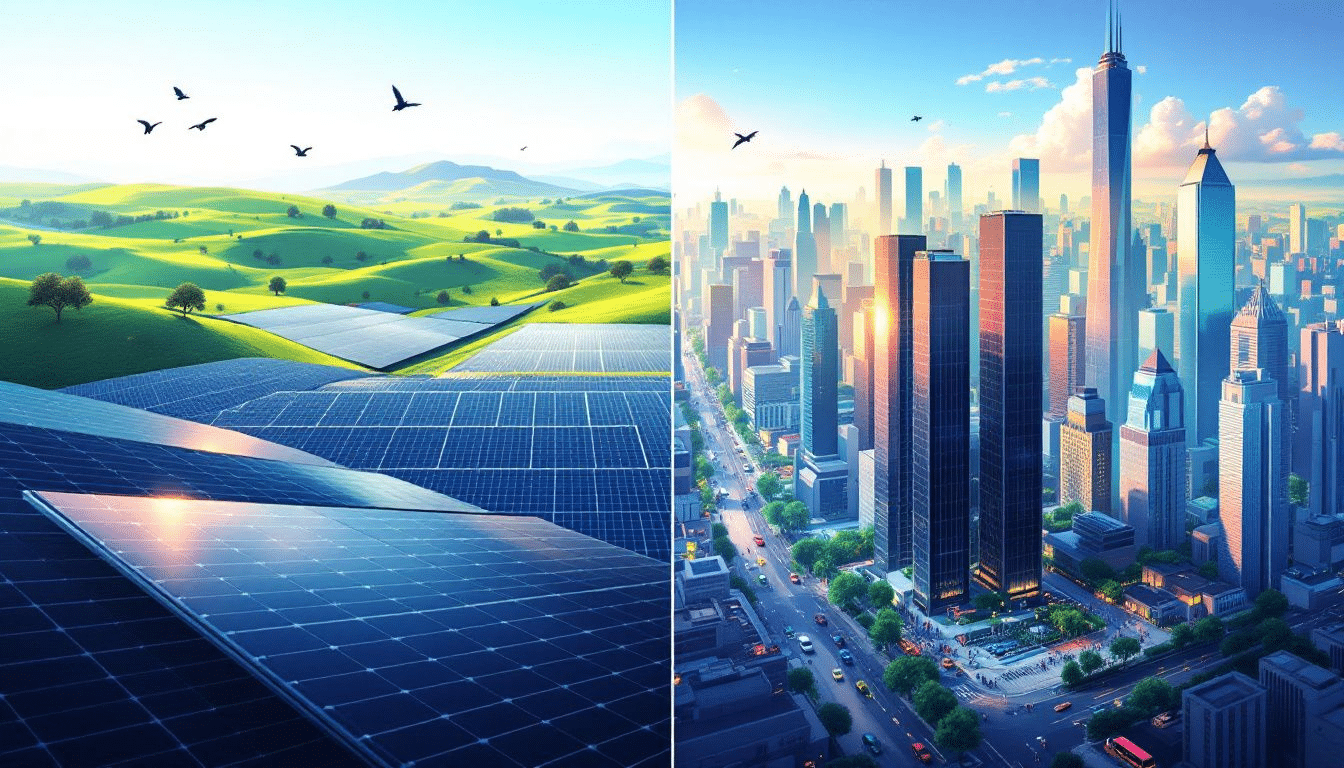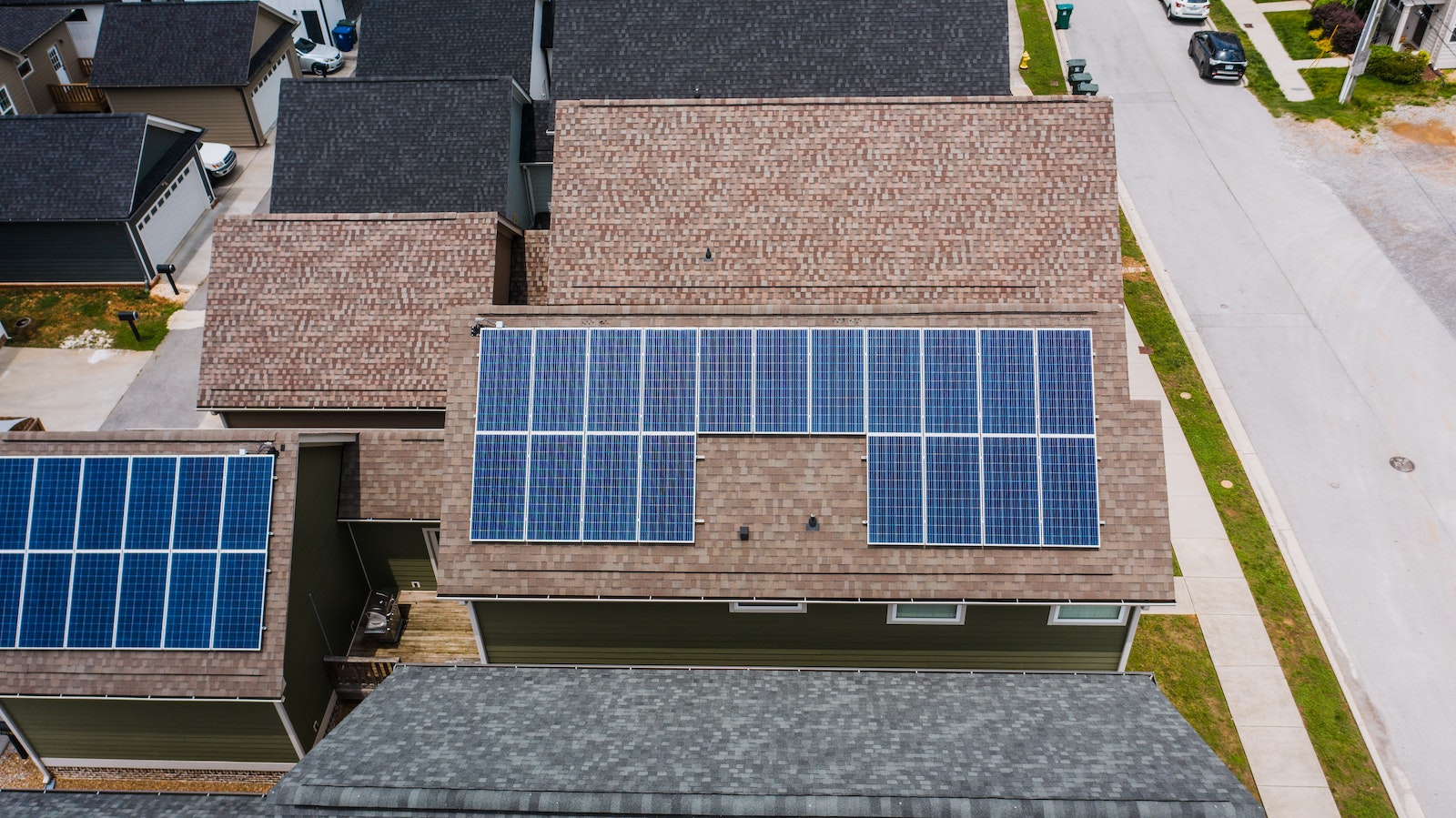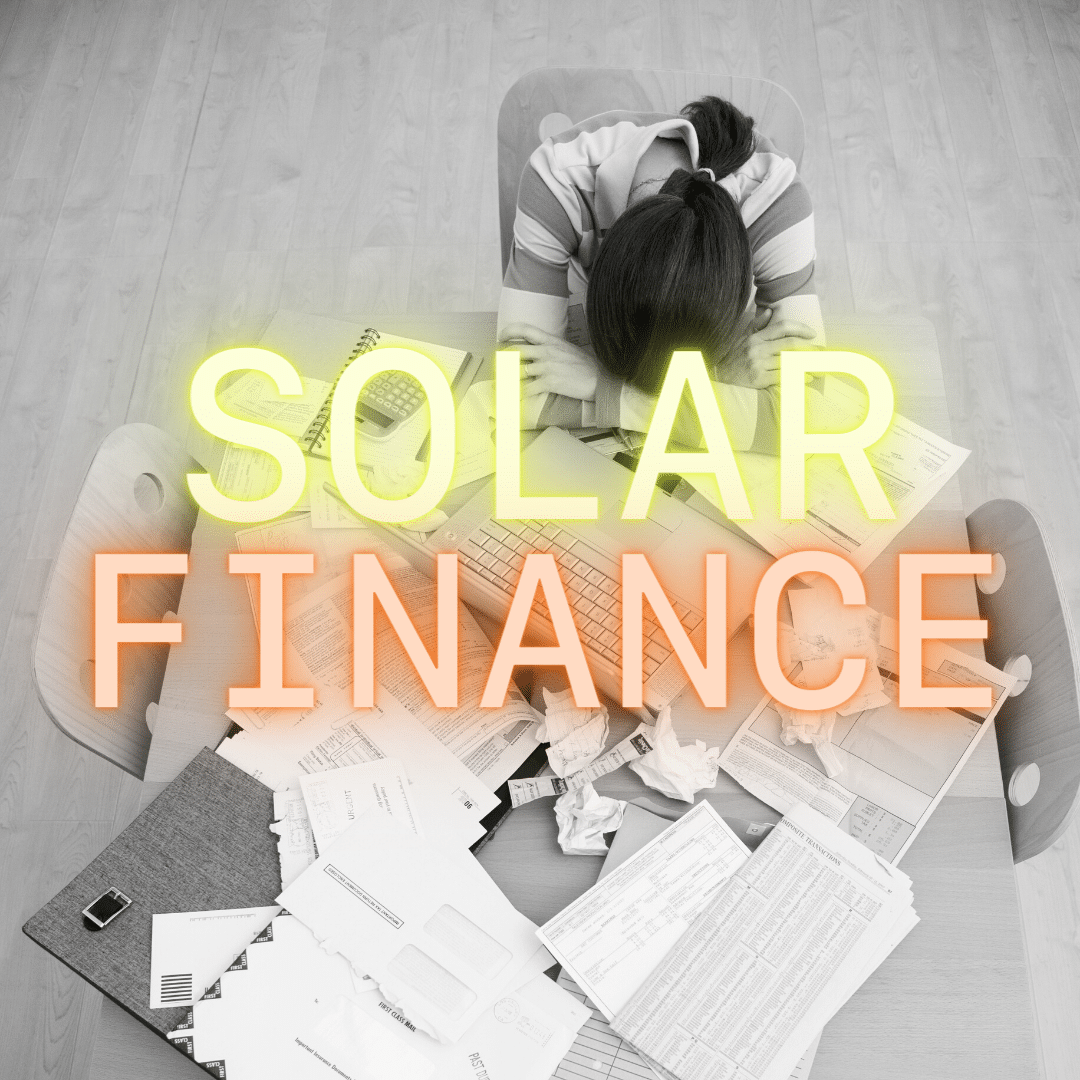Key Takeaways
- Solar power is essential for combating climate change and is expected to lead global electricity production by 2050, drastically reducing greenhouse gas emissions.
- Government incentives, technological advancements, and decreasing costs are making solar energy more accessible and affordable for homeowners, enhancing its adoption.
- Community solar programs are democratizing access to solar energy, allowing renters and those without space for panels to benefit, fostering a more sustainable future.
Solar power is rapidly transforming the global energy landscape, offering a sustainable and cost-effective alternative to fossil fuels. As the demand for renewable energy sources grows, solar energy systems are becoming increasingly popular among homeowners and businesses alike.
Sun Source Energy, a leading provider of residential and commercial solar energy solutions in Las Vegas, Nevada, is at the forefront of this green revolution. With their expertise in solar panel installations and commitment to customer satisfaction, Sun Source Energy is helping individuals and businesses harness the power of the sun to reduce their carbon footprint and save on energy bills.
In this blog, we will explore why solar power is here to stay, delving into the technological advancements, economic benefits, and environmental impact that make it a key player in green energy movement.
The Rising Demand for Renewable Energy Sources

Transitioning to renewable energy sources is essential to tackle the climate crisis. As fossil fuel reserves diminish and their environmental impact becomes clear, solar power gains prominence. Solar energy significantly reduces greenhouse gas emissions and mitigates climate change. By 2050, it is expected to lead global electricity production, outpacing both fossil fuels and other renewables.
The International Energy Agency highlights the need for a twenty-fold increase in solar photovoltaic capacity by 2050 to meet future energy demands. This shift will aid in achieving global energy goals and significantly enhance the global energy mix.
The demand for renewable energy is rising, but what specific role does solar power play in this transition?
Solar Power’s Role in Reducing Carbon Emissions
Solar power revolutionizes the battle against climate change by generating no carbon emissions or greenhouse gases during operation, unlike conventional energy sources. This makes it a highly environmentally friendly choice. Installing solar panels enables individuals and businesses to reduce their reliance on fossil fuels, thereby decreasing their carbon footprint.
Solar energy’s advantages go beyond emission reductions. Generating electricity from a renewable energy source decreases the demand for non-renewable energy, conserving finite resources and promoting a sustainable energy future. The solar energy advantages include reducing reliance on fossil fuels.
Solar energy systems, from photovoltaic panels to storage solutions, work together to deliver clean energy with minimal environmental impact, creating a solar energy system entire solar energy system.
Government Policies and Incentives Supporting Solar Energy
Government initiatives and financial incentives significantly promote solar energy adoption. Homeowners benefit from federal tax credits, like the 30% credit for solar installations, and various local rebates. These incentives lower upfront costs, making solar systems more accessible. State and local governments also offer additional rebates, further easing the financial burden.
Financing options such as solar loans and leasing make solar systems more affordable. These financial supports reduce overall costs and accelerate adoption across different demographics.
As more individuals utilize these incentives, the collective impact on reducing greenhouse gas emissions and promoting renewable energy strengthens.
Technological Advancements in Solar Energy Systems

Recent advancements in solar technology have significantly increased the efficiency and affordability of solar energy systems. The industry’s growth, fueled by technological innovations and a focus on sustainability, has led to enhanced performance and cost-effectiveness. Smart solar technologies with IoT capabilities are now integrated into systems, improving energy production monitoring and optimization.
Solar energy storage solutions have seen key advancements. Innovations in battery technology, including advanced systems and hydrogen electrolysers, are vital for significantly reducing emissions by 2050. These developments ensure efficient storage and use of solar energy, even during low availability periods.
These advancements will be explored in more detail in the following subsections.
Improved Efficiency of Solar Photovoltaic Panels
Solar photovoltaic panels have become remarkably more efficient over the years, with most panels today achieving 15% to 20% efficiency. Recent advancements have pushed some panels to exceed 25%, allowing them to generate more electricity from the same amount of sunlight, thus becoming more cost-effective and productive.
Perovskite solar cells represent a promising development in solar technology, offering a cost-effective and efficient alternative to traditional silicon-based panels. Additionally, solar panels’ durability, lasting about three decades with minimal efficiency loss, makes them a reliable long-term investment.
The global PV sector has grown over 40% annually in the last eight years, reflecting rapid advancements and widespread adoption of this technology.
Innovations in Solar Energy Storage Solutions
Significant advancements in solar energy storage make it easier to store and use solar energy during low sunlight periods. Advances in battery technology, including lithium-ion and flow batteries, enhance storage capabilities. These batteries ensure a reliable power supply during grid outages and enable complete solar energy independence.
Although batteries are among the most expensive solar power system components and require careful maintenance, advancements in battery management systems are optimizing energy use, making solar power systems more efficient and reliable.
As technology improves, the impact of adverse weather on solar energy production decreases, further enhancing the viability of solar energy systems.
Economic Benefits of Solar Power for Homeowners

A compelling reason for homeowners to consider solar power is the significant long-term savings on electricity expenses. Over a solar panel’s 25- to 30-year lifespan, homeowners can save thousands of dollars. The initial investment is often recouped through monthly electricity bill savings, resulting in a return on investment within six to ten years.
Tailored solar financing options accommodate various budgetary needs, making the switch to solar energy easier for homeowners. Decreasing installation costs and potential property value increases further enhance solar power’s economic benefits. These aspects will be explored in more detail in the following subsections.
Decreasing Costs of Solar Panel Installation
Solar panel installation costs have significantly decreased over the past decade. What once cost over $50,000 now averages around $10,000 to $18,000. This reduction makes solar systems more accessible. Power purchase agreements (PPAs) also let homeowners pay for solar energy generated by third-party-installed systems, avoiding high upfront costs and maintenance responsibilities.
Community solar programs further reduce electricity costs without requiring ownership or installation of solar panels. Decreasing costs and flexible payment options make solar systems a viable option for more people. Lower financial barriers allow more homeowners to benefit from solar power’s economic advantages.
Potential Increase in Property Value
Homes with solar panels can significantly increase in property value, with studies estimating an increase of around $15,000. This rise is due to electricity bill savings and the ability to sell excess power back to the utility, making such homes more attractive to buyers.
These advantages make solar energy systems a smart investment for homeowners seeking to increase property value. As more buyers recognize the long-term savings and environmental benefits, demand for homes with solar panels is likely to grow.
Environmental Impact of Solar Energy

Solar energy systems provide numerous environmental benefits, setting them apart from other power sources. Countries are investing in solar energy to achieve net zero emissions and reduce fossil fuel dependence. Unlike fossil fuels, solar panels generate electricity without pollution or environmental damage from mining or drilling. They also use minimal water during operation, aiding in water conservation.
Solar panels’ lower lifecycle emissions costs compared to traditional energy sources make them an environmentally friendly alternative. The following subsections will explore reduced fossil fuel dependency and minimal greenhouse gas emissions throughout their lifecycle.
Reduced Dependency on Fossil Fuels
Adopting solar energy shifts reliance from fossil fuels to renewable sources, utilizing abundant resources and fostering a sustainable energy future. Generating electricity from solar power significantly reduces carbon footprints and fossil fuel dependency.
Solar energy’s environmental benefits extend beyond emission reductions. Unlike conventional energy sources, solar power avoids mining or drilling activities, preventing environmental degradation. Solar systems offer a cleaner alternative, protecting the planet for future generations.
Minimal Greenhouse Gas Emissions Throughout Lifecycle
Solar energy’s carbon footprint is minimal compared to fossil fuels. It generates far fewer greenhouse gas emissions throughout its lifecycle; coal emits 25 times more, and natural gas emits 10 times more. This reduction makes solar energy crucial in combating climate change.
Solar energy’s operation and maintenance costs are relatively low. Once installed, solar panels require minimal upkeep while producing clean energy for decades. The long-term environmental benefits make solar energy a valuable investment for a sustainable future.
Versatility and Reliability of Solar Power Systems
Solar energy systems are adaptable and can be installed in various climates, including urban and rural areas. Transparent solar panels generate electricity while allowing light transmission, seamlessly integrating into building designs. With an average lifespan of about 25 years, solar panels are a reliable long-term energy solution.
Solar panels’ low maintenance costs, due to the absence of moving parts, contribute to their reliability. The following subsections will explore their performance in different climates and their capacity to provide energy independence during grid failures.
Performance in Different Climates
Solar panels are designed to work efficiently in various climates, making them a versatile energy solution. Prolonged overcast weather can hinder production, causing temporary declines in output. However, panels can still operate and even benefit from snowfall, which cleans and enhances light reflection.
Adverse weather may cause temporary declines in solar panel performance, but technological advancements mitigate these effects. For example, during snowfall, increased light reflection allows continued electricity generation. These capabilities make solar panels reliable in various climates.
Energy Independence During Grid Failures
A significant advantage of solar power is providing energy independence during grid failures. Energy storage systems, such as batteries, ensure reliable power supply when the grid is down. These batteries store excess energy from sunny days, allowing homeowners to maintain power during outages.
Solar-plus-storage systems provide energy during grid failures, offering a dependable backup power solution. This capability enhances energy security and reduces reliance on conventional power plants.
As more homeowners adopt solar energy systems, the collective resilience against grid failures increases, promoting a more stable and reliable energy infrastructure.
Financial Support and Financing Options for Solar Energy
The financial support available for solar energy installations has played a significant role in its widespread adoption. The federal solar tax credit allows homeowners to claim a percentage of the installation costs against their federal income tax, making solar energy systems more affordable. In 2022, this credit was increased to 30% for systems installed between 2022 and 2032, providing substantial financial relief.
State and local governments often provide additional rebates and incentives, complementing federal tax credits and further reducing the overall cost of solar installations. Utility companies frequently offer subsidies for solar PV installations, which can lower the cost before calculating tax credits.
These financial supports make solar energy systems accessible to a broader audience, encouraging more people to switch to renewable energy and obtain solar renewable energy certificates.
Federal Tax Credits and Local Rebates
The federal tax credit for residential solar energy systems installed through 2032 is 30%, offering significant savings for homeowners. This incentive reduces the upfront cost of solar panel installations, making it a financially viable option for many. Additionally, state and local governments often provide rebates and incentives that can further lower the cost of installing solar panels.
These government incentives play a crucial role in promoting the adoption of solar energy. By reducing the financial burden, they make it easier for homeowners to invest in solar technology and enjoy the long-term savings on electricity bills. Homeowners need to have enough federal tax liability to maximize the benefits of these credits. Without sufficient tax liability, they may not be able to fully utilize them.
Solar Loans and Leasing Options
Various financing options are available to make solar energy systems more affordable for homeowners. State and local governments, as well as utility companies, may provide loan options for solar installations. Homeowners can also use home equity loans or HELOCs to finance solar panel installations, with the added benefit that interest on a HELOC may be tax-deductible if used for home improvements.
Solar leases and power purchase agreements (PPAs) offer additional flexibility, allowing homeowners to pay for the solar energy generated by their system without the high upfront costs. Contractor financing can also simplify the process of obtaining solar loans through partnerships with third-party lenders.
These financing options make it easier for homeowners to switch to solar energy and enjoy its economic benefits.
Community Solar Programs
Community solar programs provide an accessible option for individuals who want to benefit from solar energy without installing systems on their own properties. These initiatives allow multiple participants to invest in a shared solar array and receive credits on their electricity bills for every kilowatt-hour generated. This makes solar energy more accessible to those who cannot install solar panels due to financial, spatial, or rental constraints.
Participants in community solar programs typically pay a monthly fee for a share of the electricity generated by the solar project. This arrangement reduces electricity costs and promotes renewable energy adoption.
The following subsections will explore how community solar programs work and their benefits for renters and condo residents.
How Community Solar Works
Community solar programs operate by allowing multiple participants to invest in a shared solar array. Participants receive credits on their electricity bills for every kilowatt-hour (kWh) generated by the solar array. This reduces the cost of electricity, making solar energy more accessible and affordable for participants.
To join a community solar program, individuals must have a percentage of ownership in the solar project’s energy. This shared ownership model allows participants to benefit from solar energy without needing to install solar panels on their properties.
These programs make solar energy accessible to a broader audience, promoting sustainability and reducing electricity costs.
Benefits for Renters and Condo Residents
Community solar programs are particularly beneficial for renters and condo residents who cannot install solar panels on their properties. These programs provide an avenue for individuals living in rental or condo arrangements to enjoy the advantages and savings associated with solar power. By participating in a community solar project, they can receive credits on their electricity bills and reduce their overall energy costs.
Many community solar providers offer flexible contract options, making it easier for participants to transfer or cancel their agreements if needed. This flexibility ensures that renters and condo residents can benefit from solar energy without long-term commitments or installation hassles.
Community solar programs democratize access to renewable energy, making it possible for more people to contribute to a sustainable future.
The Future of Solar Energy

The future of solar energy looks incredibly promising, with continued advancements in technology and increasing adoption rates. The federal tax credit on solar installations is scheduled to decrease from 30% in 2032 to 22% in 2034, providing a strong incentive for homeowners to invest in solar energy now. The solar industry is expected to experience significant growth in the coming decades as technology improves and becomes more affordable.
Solar power is predicted to become the primary source of electricity by 2050, highlighting its increasing importance in global energy strategies. This shift underscores the transition to more sustainable energy systems and enhances energy independence. As solar technology continues to advance, its efficiency and integration into future energy infrastructure will further boost its role in electricity production.
Predictions for Solar Energy Production by 2050
According to predictions, solar power will be the primary source of electricity by 2050, playing a crucial role in future electricity production. This transition to solar energy underscores the importance of sustainable energy systems and enhances energy independence. The increasing adoption of solar energy reflects a global commitment to reducing greenhouse gas emissions and promoting renewable energy sources.
Continued advancements in solar technology are expected to further boost efficiency and integration into future energy infrastructure. Innovations such as perovskite solar cells and bifacial panels will enhance the efficiency and output of solar energy systems, making them even more viable for widespread use.
The future of solar energy is bright, with endless possibilities for innovation and growth.
Emerging Trends in Solar Technology
Emerging trends in solar technology are driving the future of solar energy. Innovations such as perovskite solar cells and bifacial panels are being developed to enhance solar energy efficiency and output. Perovskite solar cells offer high efficiency and lower manufacturing costs compared to traditional silicon panels, making them a promising alternative.
Transparent solar panels are being designed to generate electricity while allowing natural light to pass through, enhancing architectural aesthetics. Flexible solar panels are also emerging as a versatile option, suitable for integration into various surfaces, including clothing and vehicles.
These innovations are set to revolutionize the solar industry, making solar energy more accessible and efficient.
Summary
In conclusion, solar power is here to stay. It offers numerous environmental, economic, and technological benefits that make it a key player in the transition to renewable energy. From reducing carbon emissions to providing energy independence and financial incentives, solar energy systems have a lot to offer.
Now is the perfect time to invest in solar energy, with generous government incentives and rapidly advancing technology. As we look to the future, the potential for solar energy is limitless.
Consider reaching out to Sun Source Energy, a leading provider of residential and commercial solar energy solutions in Las Vegas, Nevada, to explore how you can benefit from the power of the sun.
Frequently Asked Questions
How does solar power help reduce carbon emissions?
Solar power effectively reduces carbon emissions by generating energy without releasing any greenhouse gases, offering a cleaner and more sustainable energy solution. Making the switch to solar can greatly contribute to a healthier planet.
What are the financial incentives for installing solar panels?
Installing solar panels offers substantial financial incentives, including a 30% federal tax credit through 2032 and various state and local rebates that can significantly lower your costs. It’s an exciting opportunity to invest in clean energy while saving money!
How do community solar programs work?
Community solar programs are a fantastic way to access solar energy by investing in a shared solar array, which helps you earn credits on your electricity bills for the energy produced. It’s a great opportunity to support renewable energy while enjoying savings!
Can solar panels work in different climates?
Absolutely! Solar panels are effective in different climates, generating electricity even on cloudy days and benefiting from reflective snowfall. You’ll be pleasantly surprised by their versatility!
What are the emerging trends in solar technology?
Exciting advancements in solar technology, such as perovskite solar cells, bifacial panels, transparent options, and flexible designs, are paving the way for greater efficiency and versatility. These innovations promise to make solar energy more accessible and effective than ever!






